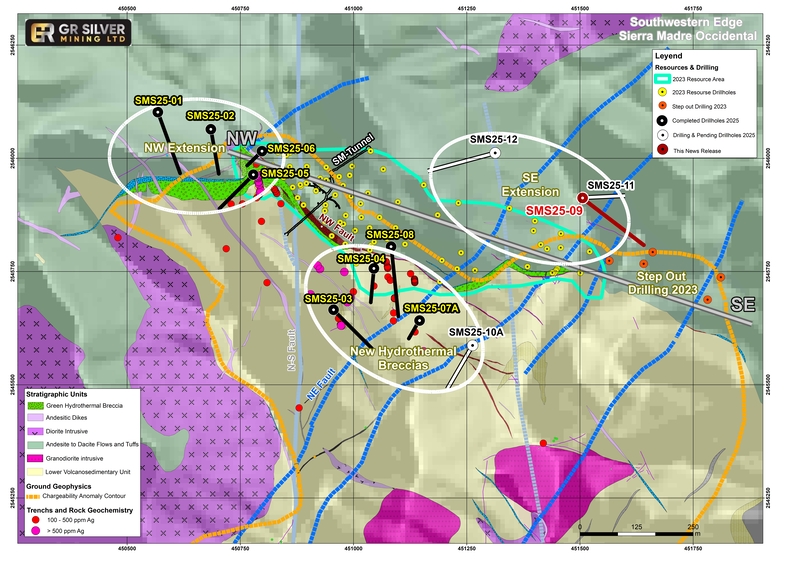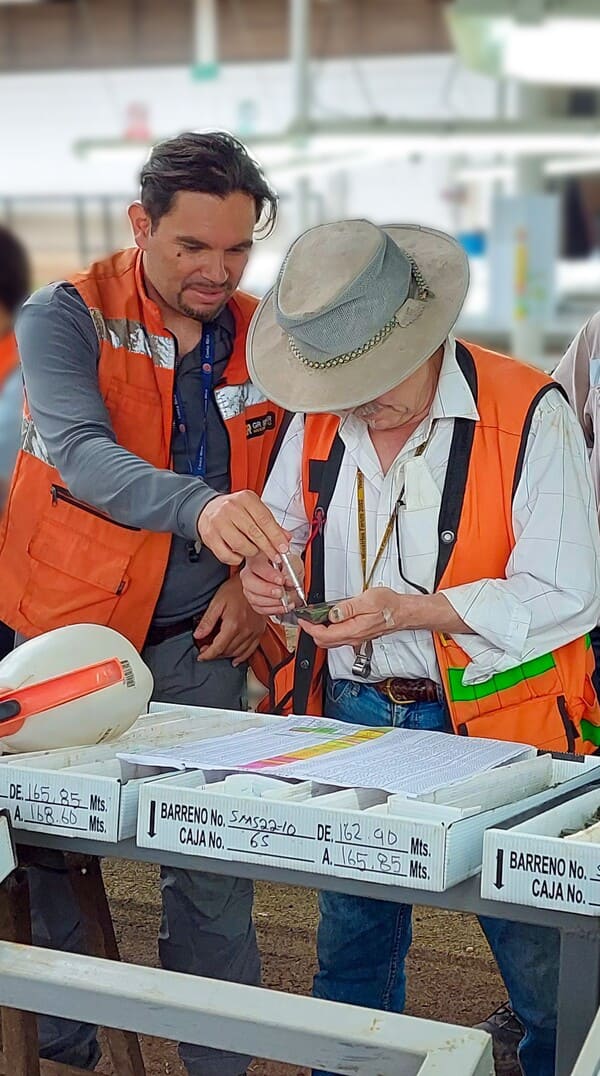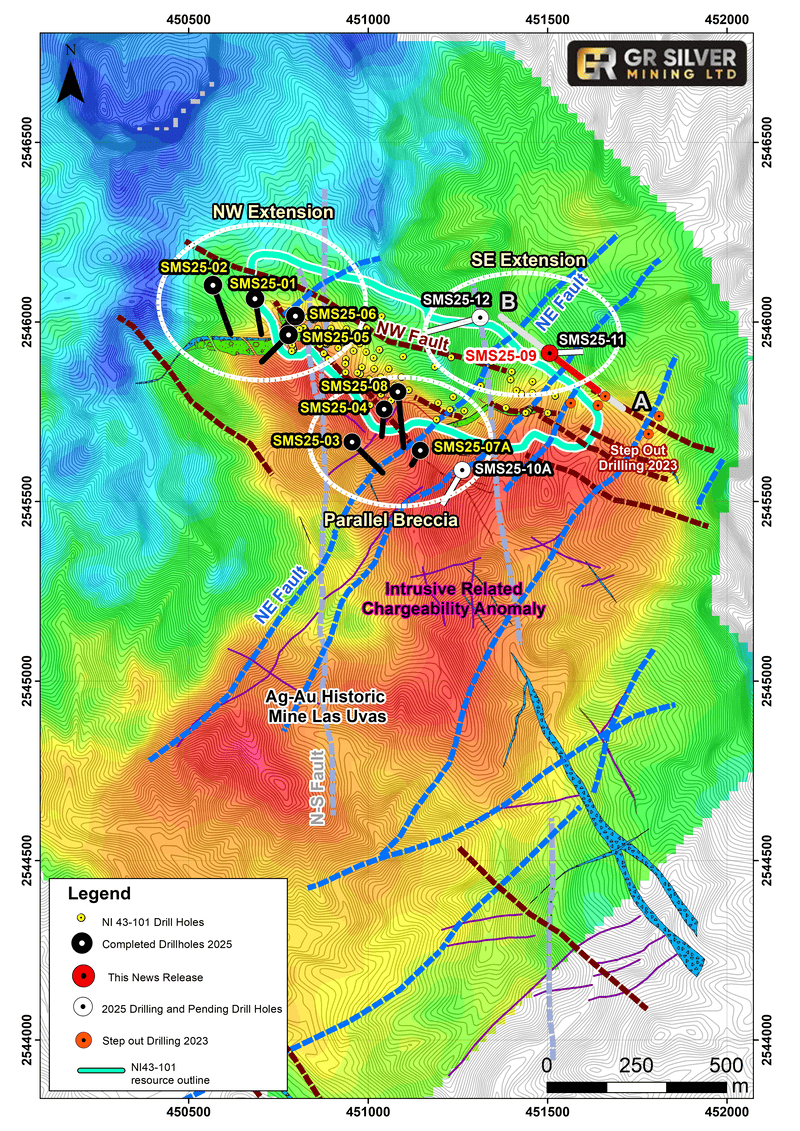Resource Growth Opportunity
- Modern data modelling combined with new geological knowledge supports the ongoing exploration drilling program.
- Delineation of high-grade zones in bulk mineable style silver deposits.
The 1,250-hectare San Marcial Area is located 98 kilometres southeast of Mazatlán, in the state of Sinaloa, Mexico, and 5 kilometres south of the Company’s Plomosas Mine Area.
Silver Resource and Exploration Potential
The San Marcial Area silver resource represents a significant opportunity for future mine development. Recent drilling and geological modelling confirm the area’s potential to expand beyond the existing NI 43-101 footprint.
Key Highlights
-
Current resource footprint covers only 20% of the defined chargeability anomalies, leaving considerable growth potential.
-
Discovery of additional mineralization at the SE Area in 2022 reported 101 m at 308 g/t Ag, including 17 m at 414 g/t Ag, followed by the recently reported the intersection of 75 m at 293 g/t AgEq, including 6.4 m at 1,915 g/t AgEq (SMS25-09), strengthening the case for expansion.
-
Ongoing exploration drilling is focused on delineating high-grade zones in bulk-mineable style silver deposits.
Geological Setting
The San Marcial deposit is a well-preserved, high-grade epithermal hydrothermal breccia, developed during the Oligocene extension of the Sierra Madre Occidental. It is structurally controlled by NW-SE faults and hosted within Oligocene volcanoclastic rocks.
Recent exploration has identified similar geological settings beyond the current resource outline, pointing to intrusive-epithermal related silver-gold exploration targets that could drive further resource growth.
Chargeability Map and Resource Update
In March 2023, GR Silver Mining announced an updated NI 43-101 mineral resource estimate for the Plomosas Project. This update incorporated data from the San Marcial Area, Plomosas Mine, and San Juan–La Colorada Areas. Full details are available in the 2023 Technical Report.
The San Marcial deposit remains open along strike and at depth, highlighting ongoing potential for resource expansion.
Royalty Interests and Purchase Rights related to the San Marcial Property:
-
0.75% NSR to EMX Royalty Corporation, with the option to purchase back in full for US$1.25M.
-
3.0% net production royalty to Met-Sin Industriales S.A. de C.V., with the option to purchase back in full or in part for US$0.6M per each 1%.
Want to explore the geology in depth?
The San Marcial Area hosts complex geology and multi-phase mineralization that supports its high-grade silver potential.


